Search Images
Browse Content (p. 1233)
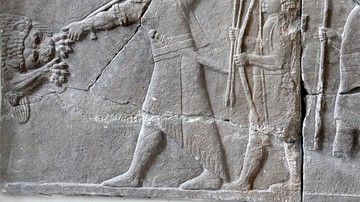
Image
Assyrian Lion Hunt Relief, Nineveh
Gypsum wall relief depicting the typical royal hunting of lions, part of a longer sequence. The king, Ashurbanipal II, thrusts a spear onto a leaping and furious lion. Behind him, an Elamite squire assists him. Partially appearing on the...
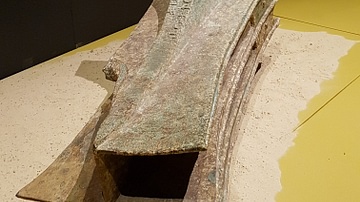
Image
Rostrum from a Roman Warship (Detail)
Rostrum from a Roman warship used in the Battle of the Aegates Islands. C. 250-241 BCE. Soprintendenza del Mare, (National Maritime Museum, Sydney Australia). Eleven rostra have been recovered so far from the site of the Battle of the...
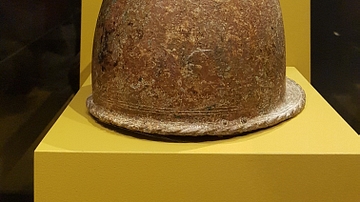
Image
Helmet from The Battle of The Aegates Islands
An iron helmet from the Battle of the Aegates Islands. 241 BCE. Soprintendenza del Mare, (National Maritime Museum, Sydney Australia)
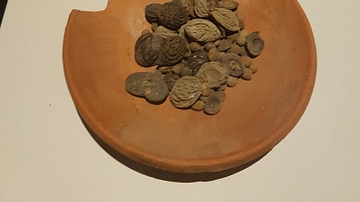
Image
Roman Plate with Fruit Seeds
A plate containing fruit seeds. Ostia, 4th century CE. Museo delle Navi Romane di Fiumicino, (National Maritime Museum, Sydney Australia) Found on one of the ships excavated at Portus, the plate was made in the Roman province of Africa...
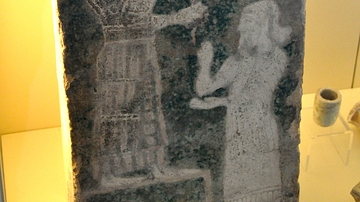
Image
Worship Scene from Assur
This is a glazed ceramic tile. A man stands and prays before Shamash, the Sun God. Symbols of Mesopotamian deities appear on the upper part. Neo-Assyrian Period, 8th century BCE. From Assur (Ashur; modern-day Qal'at Sherqat). (Pergamon Museum...
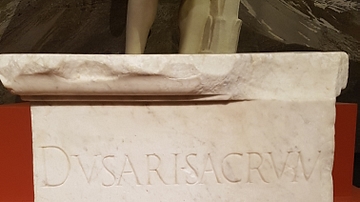
Image
Marble Altar Sacred to Dushares Puteoli
Marble altar sacred to Dushares Puteoli. 1st century CE. Museo dei Campo Flegrei, (National Maritime Museum, Sydney Australia). A beautiful piece of Italian Carrrara marble fashioned into an altar to Dushares, a god of the Nabateans from...
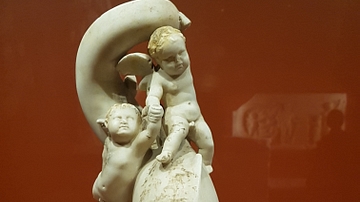
Image
A Fountain Head from Pompeii
A fountain head in the shape of a cupid riding a dolphin. The water spouted from the mouth of the dolphin. From a private garden in Pompeii. 1st century CE. Soprintendenza Archeologica di Pompei, (National Maritime Museum, Sydney Australia...
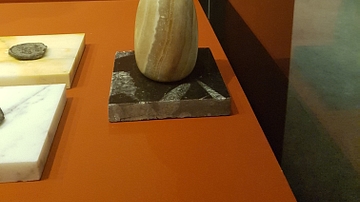
Image
Ointment Jar From Pompeii
Alabaster ointment jar from Pompeii. 1st century CE. Soprintendenza Archeologica di Pompei, (National Martime Museum, Sydney Australia).
Alabaster was used frequently for ointment vessels as the stone preserved the contents.
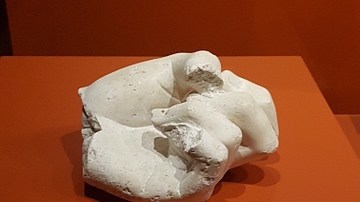
Image
Hand from A Roman Sculptor's Model
A hand from a sculptor's model. Found in Baiae (Italy). 1st century CE. Museo dei Campo Flegrei, (National Maritime Museum, Sydney Australia). Marble copies of Greek masterpieces were in high demand to decorate villas, gardens and public...
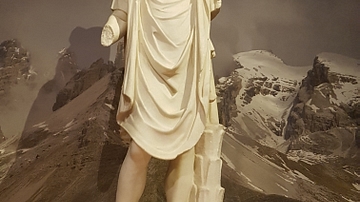
Image
Statue Of Hermanubis
This marble statue depicts Hermanubis, a combination of the Greek god Hermes and the Egyptian god Anubis - both guides to the souls of the dead. Found in Baiae (Italy). 1st century CE. Museo dei Campo Flegrei, (National Maritime Museum, Sydney...